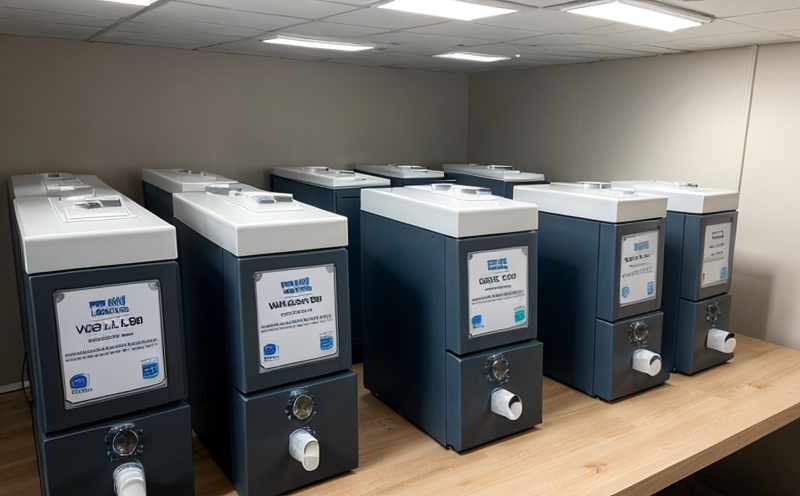EN ISO 12460-5 Wood based panels Formaldehyde content Extraction method
The CEN standard EN ISO 12460-5 is a critical tool in the formaldehyde testing of wood-based panels. This method is designed to quantify the total amount of volatile organic compounds (VOCs) and specifically, the formaldehyde content within these panels.
The extraction process involves several steps that ensure accurate quantification of formaldehyde. The first step is the preparation of the sample, which must be representative of the wood-based panel being tested. This includes ensuring the sample is cut into small pieces of standard size and shape to minimize errors in measurement. After this, the samples are extracted using a solvent method.
The extraction process itself can take several hours depending on the type of wood-based panel. During this period, the formaldehyde is released from the wood matrix and dissolved in a solution. The efficiency of the extraction can vary based on factors such as the type of wood used, moisture content, and the presence of other compounds that may interfere with the extraction process.
Once the extraction is complete, the sample is filtered to remove any particulates or debris that may have been released during the process. The extract is then analyzed using a gas chromatography-mass spectrometry (GC-MS) method. This allows for accurate quantification of formaldehyde and other VOCs present in the wood-based panels.
The standard specifies the acceptance criteria for the test, which includes both qualitative and quantitative limits. These limits are set to ensure that only acceptable levels of formaldehyde are present in the final products. Compliance with these standards is crucial for ensuring the quality and safety of the finished product.
Understanding this method is essential for quality managers, compliance officers, R&D engineers, and procurement personnel involved in the production and regulation of wood-based panels. This knowledge helps them ensure that their products meet international standards and are safe for use.
Why It Matters
The importance of formaldehyde testing cannot be overstated, especially in the context of wood-based panels. Formaldehyde is a known carcinogen that can pose significant health risks when released into the air from materials used in construction and furniture.
- Health Risks: Exposure to high levels of formaldehyde has been linked to respiratory problems, skin irritation, and even cancer.
- Environmental Impact: The release of VOCs during the production process can contribute to air pollution and other environmental issues.
The EN ISO 12460-5 method provides a reliable way to measure formaldehyde levels in wood-based panels, ensuring that these products meet safety standards and do not pose undue health risks. This is particularly important for industries such as construction, furniture manufacturing, and interior design where exposure to materials like particleboard, fiberboard, and plywood can be high.
Industry Applications
The EN ISO 12460-5 method finds application across several industries:
| Industry | Application |
|---|---|
| Furniture Manufacturing | Testing formaldehyde levels in particleboard and fiberboard used for furniture construction. |
| Construction | Ensuring compliance with building codes that mandate acceptable levels of VOCs. |
| Interior Design | Evaluating the safety of materials used in interior design projects. |
| Furniture Retail | Verifying product compliance before sale to ensure consumer protection. |
- Health and Safety: Ensuring that products do not emit harmful levels of formaldehyde during use.
- Sustainability: Minimizing the environmental impact of production processes by reducing VOC emissions.
Competitive Advantage and Market Impact
The ability to accurately test for formaldehyde content provides significant competitive advantages:
- Innovation: Continuous improvement in testing methods leads to better product quality.
- Consumer Trust: Demonstrating adherence to international standards builds trust with customers and regulators.
The market impact of this service is substantial. By ensuring compliance, businesses can avoid costly recalls and penalties associated with non-compliance. Additionally, it enhances brand reputation and opens up new markets for sustainable products.





